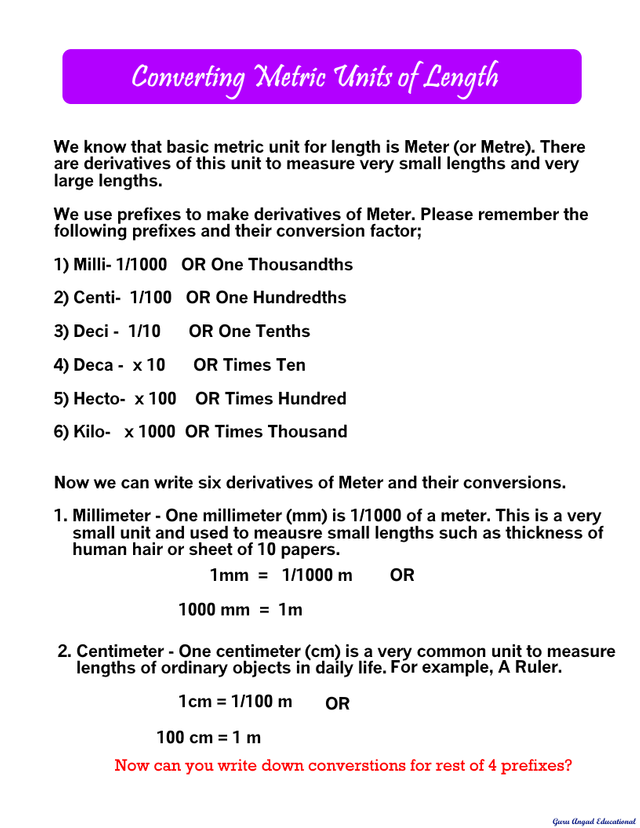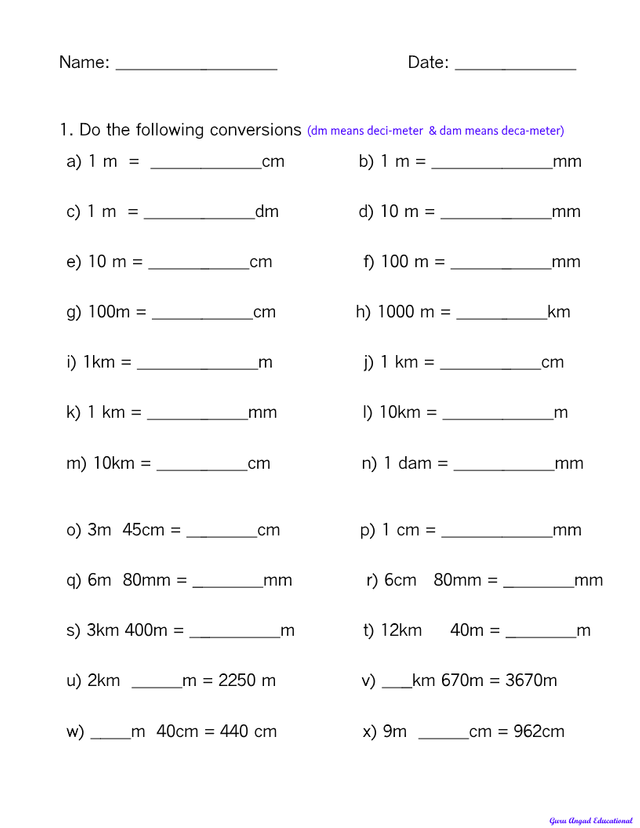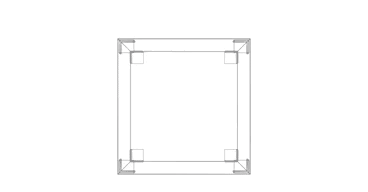4TH GRADE MATH - METRIC UNITS OF LENGTH "CONVERSIONS"
Conversion of Metric Units of Length
In this activity we will discuss conversion of metric units of length. We already know that standard metric unit of length is Meter (also written as Metre). Symbol used to denote Meter is "m".
Based on the sizes of lengths we want to measure, we need the derivatives of Meter. For example somebody wants to measure the thickness of human hair or thickness of sheet of a papers. Somebody else wants to measure the distance between two cities. Both of these persons wants to measure lengths but their difference is huge.
Based on the needs and to measure long and large lengths (distances) we use the prefix "kilo-" in front of Meter which means 1000. Hence 1 kilometer (1 km) is equal to 1000 meters.
Similarly to measure small lengths such as thickness of human hair we use the prefix "milli-" in front the meter and "milli-" means One Thousandth (1/1000) . Hence 1 millimeter (1mm) is equal to 1/1000 meter. Or in other words we can write 1 meter is equal to 1000 millimeters.
Below is the activity sheet followed by a worksheet to practice the conversion among the units of length;


Below are the links to 2nd grade and 3rd grade math pages, where you can print all the content for 2nd and 3rd grade math students;
2ND GRADE MATH CORE CURRICULUM
3RD GRADE MATH CORE CURRICULUM

Thanks @mathworksheets, for refreshing my memories. This content I liked to explain with the staircase that the children quickly learned the "conversion"
This is awesome @guada1. Very well explained the concept of unit conversions. Thanks for supplementing the post!
Nice post reminded me of something @mathworksheets. To remember how to convert one unit into another I used to learn some letters in a specific order as below:
K H D M D C M
Kilo Hecto Deca Meter Deci Centi Milli
I Kilometer = 10 Hecto Meter
1 Kilometer = 100 Deca Meter
1 Kilometer = 1000 Meter
Similarly if we start from Meter
1 Meter = 100 Centimeter because Centimeter is 2 steps ahead of Meter thats why ×100.
1 Meter =10 Decimeter as it is one step ahead of Meter that why ×10.
Similarly if we will move backward it will turn into 1/10 or 1/100 and so on.
Thanks for sharing.
That's a great pattern and key word KHDMDCM to memorize the unit conversions. Thanks a lot for your useful ideas for my post!
Thank you so much for the appreciation @mathworksheets. Its just little contribution as compare to your hard work. Thanks for always supporting and guiding me.
Very great worksheet dear brother. Please check your wallet. Thanks for sharing.
Thanks a lot for your support my dear brother! Love for you and yours!!
I'm wordless. I cannot explain my love for you. Thanks again
Upvote and resteemd your educational and helpfull post sir..thanks a lot

Thank you @abrocky for your support :))
Great and amazing post @mathworksheets.In addition to the difference in the basic units, the metric system is based on 10s, and different measures for length include kilometer, meter, decimeter, centimeter, and millimeter. Notice that the word “meter” is part of all of these units.
Thanks for sharing this post.
Thanks for your feedback my dear friend @stardivine :))
This is amazing sir thanks a lot for sharing have a great day.
Nice work dear i love these maths conversions but i forgets its hard to remember.
Nice conversion sheets for kids to practice and master it :)
This is awesome blog post sir you are the best in industry.
Amazing work sir thanks a lot for sharing have a great day.